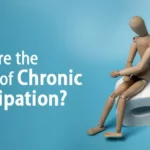
What is Vitiligo?
Vitiligo is a rare, non-infectious skin disorder that affects production of melanin, which gives colour to our skin, thus leading to depigmentation or loss of skin colour, causing pale patches. While vitiligo is not infectious, nor life-threatening, it can severely affect one’s self-esteem, given the needless social stigma attached to this condition. It can be a life-changing experience for the patient, leading to anxiety, embarrassment and depression, and often even the family is subjected to social stigmatization.
The only way to fight this stigma is to raise awareness about this largely harmless skin condition by busting the myths surrounding vitiligo. So here some common myths about vitiligo and the corresponding facts that nail those misconceptions:
Myth: Vitiligo strikes only dark-skinned people or those who have mixed-race parents.
Fact: While vitiligo might be more noticeable among people with dark skin, it can affect people of all races and skin colour.
Myth: Vitiligo is related to leprosy, skin cancer or albinism.
Fact: It has nothing to do with either skin cancer or leprosy or any other skin condition. Vitiligo is understood to be an autoimmune disorder in which the body’s immune system attacks and kills melanocytes, the cells that make our skin colour.
Myth: Vitiligo is contagious.
Fact: Vitiligo is a skin condition, not an infection. Hence, it is not contagious at all.
Myth: It only affects visible parts of the skin, like hands or faces.
Fact: While pale vitiligo patches are more widely seen in areas of the skin which are more exposed to the sun, like the face, hands and feet, arms and lips, such patches are not unusual in generally covered areas like the groins, navel, armpits, genitals and rectal areas.
Myth: Vitiligo is made worse by certain foods.
Fact: Vitiligo has nothing to do with the food you consume and the treatment is never aimed at avoiding any particular food.
Myth: Those with vitiligo can have some form of impairment or even mental disorders.
Fact: Vitiligo is not a life-threatening disorder and most people with the condition live an otherwise healthy and happy life, barring coping with the social stigma.
Myth: Vitiligo can be cured.
Fact: While there are some creams and other treatments including UV light therapy, surgical skin and cellular grafts, besides medications to control or slow down the spread of vitiligo patches, there is no cure for the condition available at present.
Myth: Vitiligo heals on its own.
Fact: Like any other autoimmune disorder, vitiligo doesn’t heal by itself. The condition needs specialized scientific treatment and if left untreated, the patches might spread to other areas or increase in size. It is absolutely imperative to see a dermatologist for vitiligo.
Myth: Exposure to the sun causes vitiligo.
Fact: There is no direct connection between sun exposure and vitiligo. However, those having the condition are advised to avoid exposure to the sun to avoid sunburn. It is in no way a mitigating factor, though.
Myth: Vitiligo is not treatable.
Fact: Modern medicine offers a clutch of treatment options for vitiligo, including medications, steroids, Ultraviolet A and B, besides surgical options like split-thickness skin grafting and melanocyte transfer. Of course, the treatments are long drawn-out and it’s extremely critical to care for the mental health of the patient because of the unfortunate stigma attached.
Myth: Vitiligo and leucoderma are two names for the same condition.
Fact: While vitiligo is an autoimmune condition, leucoderma is a symptom or after-effect of conditions like vitiligo, lichen sclerosis, post-trauma scarring and the like.
Myth: All white patches are vitiligo.
Fact: There are many disorders which can cause white patches, like nevus, post-burns, leprosy, some fungal infections, etc.
The Skin Specialists at Medica Ranchi treat all kinds of skin conditions, including Vitiligo. Our multi-disciplinary team of dermatologists, psychologists and general medicine physicians help in understanding, treating and living with the condition.








